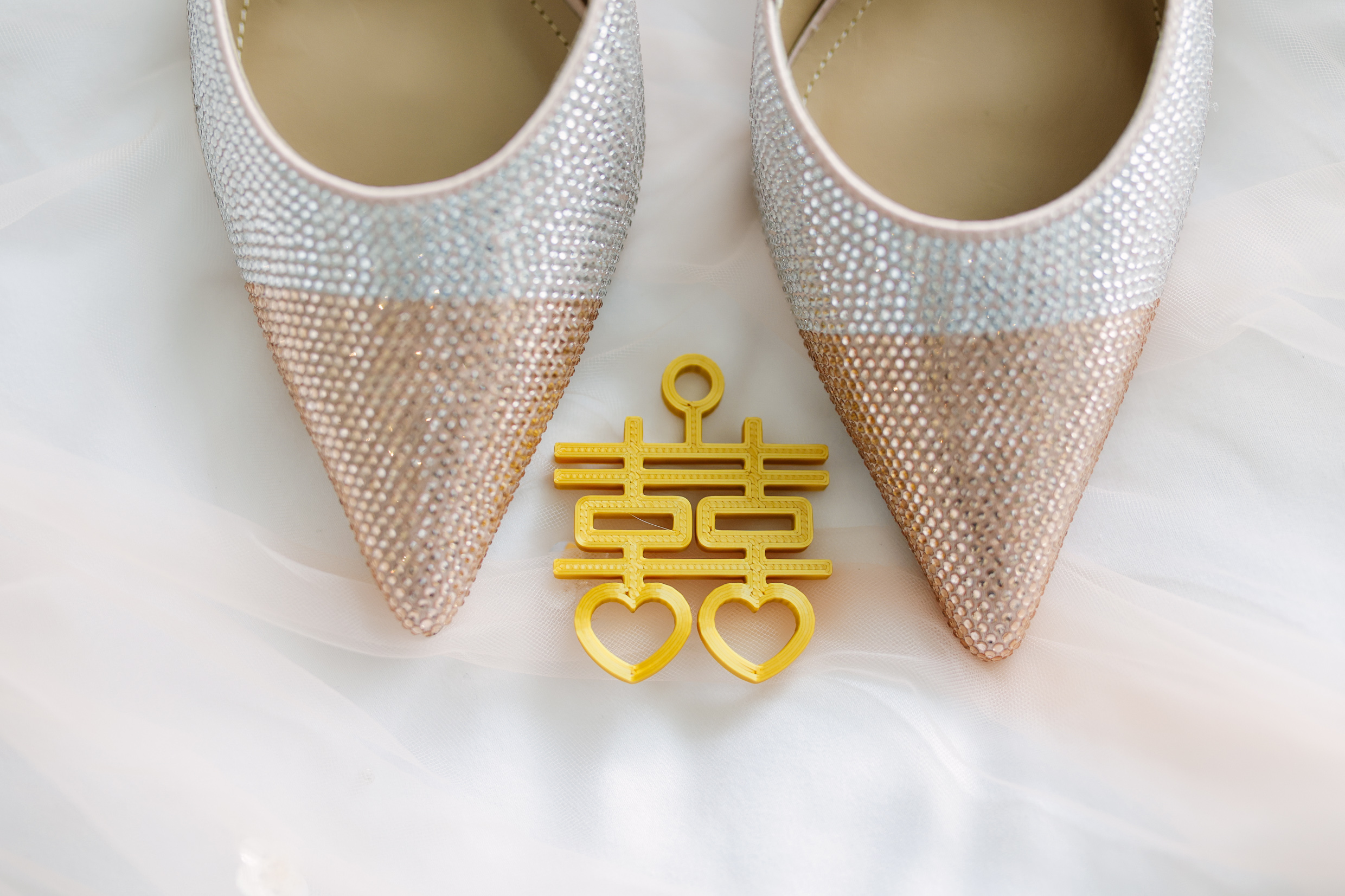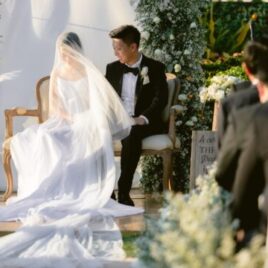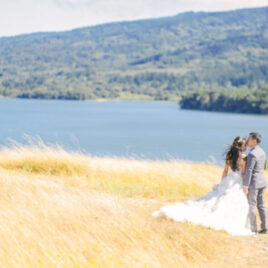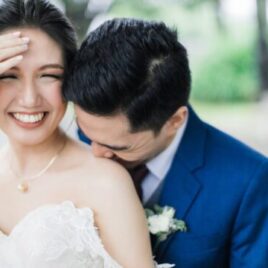The tinghun is a time-honored tradition that shows two families’ solidarity as their children commit to spending the rest of their lives together. Like any tradition or practice, it follows a strict flow that ensures good luck, prosperity, life, and the best of health for the engaged couple.
Every couple may celebrate the tinghun dfferently. Some choose a grand pre-wedding celebration while others prefer a simpler and toned-down affair. Regardless of how it is celebrated, the tinghun is considered an important ceremony for couples that wish to honor their Chinese heritage.
Preparation
The groom should choose who he will include in the ceremony – 6, 10, or 12 relatives or family members close to him. His guest list is limited to his engagement entourage while the bride’s guest list has no limits.
The bride chooses her guests based on the same criteria – closeness to the bride, the impact they have made in her life, and seniority in the family.
Note: These members should not be chong with the couple. In addition, guests who are chong with the couple are suggested to refrain from witnessing the ceremony. However, they are welcome to join the reception later. The same goes for other engaged couples or pregnant women to prevent the “tug-of-war” of good luck.
The groom’s family prepares gifts for the bride. The tinghun is a ceremony that welcomes the bride to the groom’s family. The gifts are an assurance that the bride is valuable and that the groom can provide for her. There’s no required gift list, but some of the standard gifts are:
- sets of jewelry, necklace with medallion, watch, and bangle to show the groom’s financial capacity
- two rings
- corsage and bouttonneire
- eggs to symbolize fertility
- fruits, like pomelo and oranges, to symbolize prosperity and luck
- misua noodles to symbolize longevity
- two ang paos (one with small amount and one with a big amount, to be returned by bride to signify good manners)
- gifts for girl’s parents and grandparents
- round cake
- sweets like chocolates and candies
- a variety of flowers (except white)
- canned fruit cocktail and canned pork leg
The woman also prepares return gifts for the man. This includes two cakes, one with the man’s name and the other one with the woman’s name. While the gifts exchanged are negotiable, they should come in pairs to symbolize “double happiness.”
Once the couple has decided on the extent of their occasion, they choose an auspicious date for the tinghun. This is usually done with the help of an expert.
On the day
The groom’s party should arrive at the venue at least an hour before the ceremony time so they can set up their gifts.
The bride’s family should be at the venue earlier than the groom’s so they can prepare well and welcome the groom’s family, just like how they will if they are holding the tinghun at home.
The ceremony
The bride’s parents welcome and receive the groom’s family through the main door in this particular order: groom, parents, and the family members joining him in the ceremony.
The groom enters the room carrying a corsage or bouquet of flowers. Four male relatives follow, each carrying a Sin Na. This is a bamboo box with four layers filled with gifts that symbolize happiness and prosperity. Each gift is brought in depending on its value.
The older representatives of the groom prepare the table and cover it with a red bridal satin cloth. This is done while the gifts are being brought into the room. While the bride’s mother and other female relatives can also help out with the table preparations, most of the work is done by the groom’s mother, a sign of approval and acceptance of her son’s chosen bride.
The woman enters the room by walking backward with the assistance of an aunt or female friend, while the man stands up and waits for her to be seated. The woman’s assistant is chosen based on the following criteria: her parents should still be alive, and she should be married and have children. When the assistant guides the woman into the room, this symbolizes that the woman will follow in her footsteps and live a good and fruitful life as well. The backward walk symbolizes the woman’s transition from singlehood to engagement.
Guests are offered candy. Once the bride takes her seat, orange juice or red juice is also served according to seniority: from the eldest in the groom’s entourage to the youngest. The bride’s entourage is served next following the same order. The couple is served last.
The glasses are collected once the juice is consumed. After this, comes the giving of gifts.
Note: To make sure that the ceremony flows smoothly, assign a coordinator in charge of photos, videos, food, and refreshment. A Chinese wedding planner who is familiar with tinghun is of course preferred.
The bride is bedecked with jewelry from the groom’s gifts. Each relative stands up and puts the gifts on the bride: the Chinese bangle from her mother-in-law, the gold medallion and the necklace from her father-in-law, and the watch from the oldest representative from the groom’s entourage.
The bride’s family reciprocates and puts on the groom the return gifts, following the same process with one deviation: the eldest representative from her entourage gifts the groom with an heirloom or a bracelet; however, this is optional.
The groom and bride exchange rings. The man goes first, sliding the ring on the fourth finger of the woman’s left hand. The woman follows suit, also placing the groom’s ring on the fourth finger of his left hand.
The groom pins the corsage on his bride, while the woman pins the boutonniere on her groom. This part of the ceremony may also be done at the beginning. However, since superstition says that nothing should fall down during the giving of gifts, the pinning of the corsage and boutonniere can be done at the latter part of the tinghun. Remember to take photos during the gift-giving. It would be good to also have photos of the giver posing beside the groom and bride.
When all gifts have been given, the bride and groom serve tea. The groom holds the tea tray while the bride serves the guests starting from the oldest representative from the groom’s entourage. Once the guest receives his drink, he should stand up, drink up, and hand back the teacup to the bride who then returns it to the tray before serving the next guest.
After all the guests from the groom’s side have been served, it’s the bride’s entourage’s turn. This time, the bride holds the tray while the groom serves in order of seniority. This is also the time that the couple could start calling their in-laws mother or father.
The groom may opt to hold the tray again as a sign of respect while the bride serves the guests.
After all the guests have taken their tea, formal photos are taken in the following order:
- Couple
- Couple with woman’s parents
- Couple with woman’s immediate family
- Couple with parents from both sides
- Couple with man’s parents
- Couple with man’s immediate family
- Couple with man’s engagement entourage
- Couple with woman’s relatives
- Couple with woman’s friends
While the picture taking is ongoing, someone should start preparing the misua and sweet egg soup at the main dining table. Once ready, the bride’s mother calls all the guests to eat.
Make sure that you have a seating arrangement planned beforehand to ensure a smooth transition of events. Some think that the groom’s entourage should have priority seating at the main dining table. Even if this is followed, the bride’s parents should always be seated at the main dining table.
The rule of pairs is followed when serving the sweet egg soup. Guests are served the soup with two eggs and two ang cho. A guest may only eat one egg as long as the other egg is cut in half. However, both ang cho should be consumed. If a guest cannot finish two ang cho, then both should be left uneaten.
Misua follows the sweet egg soup and is served based on seniority, starting from the groom’s oldest representative. The same process follows the bride’s side. The couple is served last.
While the misua and sweet egg soup are being eaten, an assigned person ensures that the ang paos and jewelry are safe and that the other guests who are not part of the main dining table are being served. Fruits, sweets, and canned goods are prepared as giveaways.
During this time, all the single ladies are given flowers.
The bride returns the ang paos to her groom, while the groom gives back the money to his parents.
The couple has a photo op with their cakes. As the engagement ends, the groom brings the cake with his bride’s name while a relative brings the cake with his name. The groom and his relative walk or drive around the venue twice, forming a circle. This symbolizes the path the couple has chosen to take together and their unending union.
When the groom returns, he takes the cake with the bride’s name and leaves it in his car. The bride then waits for him to give her the cake with his name.
The tinghun ends when everyone partakes of the food.
The couple may choose to have their prenup photos taken at a studio or during the reception.
The tinghun requires respect for tradition and extra care for detail. While outsiders may view it to be a fastidious event, it is a beautiful ceremony that affirms and bonds the couple, sending them off with well-wishes, prosperity, and happiness as they start their married life.






